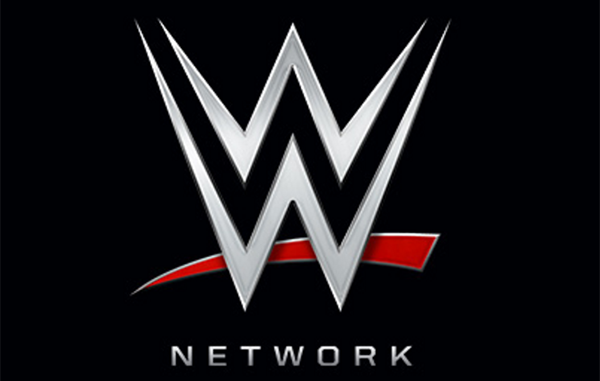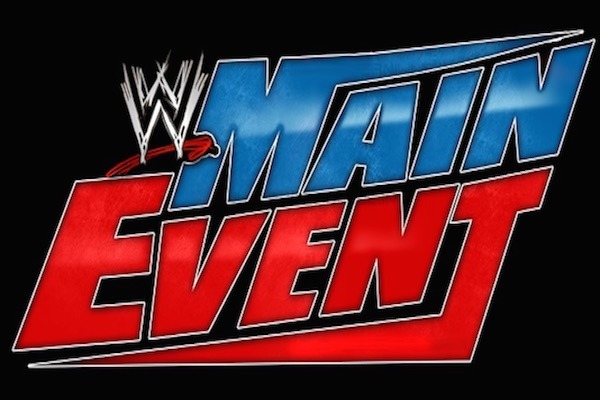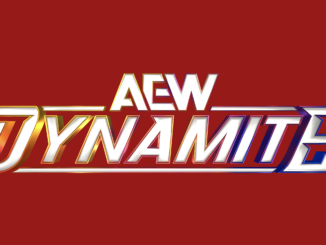
SPOTLIGHTED PODCAST ALERT (YOUR ARTICLE BEGINS A FEW INCHES DOWN)...
WWE Icons
“Yokozuna”
Yokozuna has a very soft spot in my heart. He is one of the first wrestlers whose journey I was able to see in full on the national stage with his run in WWF starting a short while after I started watching wrestling. I remember so vividly the introduction and rise of Yokozuna and he was this unstoppable heel that none of my favorites could topple. And then sadly less than a decade later he was gone. The new Icon series for the WWE Network seems to be aimed at those that WWE has for quite some time not focused on and despite his dominance, at one time Yoko falls into that category.
The early days of Rodney Anoa’i are covered pretty briefly but do note that he was skipping school a lot and that he wasn’t looking to graduate. That’s when his parents sent him to the Wild Samoans to learn some discipline and make something of himself. As someone that didn’t grow up in a wrestling family that sounds crazy, but all families work differently. One thing to note is that Rodney’s parents were not in the wrestling business and his father served in the Marines. This documentary has loads of great interviews including those you’d expect like the Wild Samoans, Rikishi, Samu, and Roman Reigns, but also members of his family not as well known such as Rodney’s sister, Elevera.
Rodney’s time training is covered and his bonds with both the Wild Samoans and the future Samoan SWAT team are highlighted. Rikishi noted that he felt that no one in the family loved the business more than Rodney.
Rodney’s time as Kokina is covered next and you just marvel at how good he was at that smaller size. He was everything Umaga was almost 20 years later but bigger. Gerald Brisco and Bruce Prichard both talk about how they were so impressed by what he could do at his size. One interesting thing I had never heard was the original plan was for Samu and Kokina to come in as a team but Kokina got hurt and was replaced by Rikishi. Some really neat footage is shown with both dark matches and some test interviews with Mean Gene that featured Rodney as the Kokina character.
The development of the Yokozuna character is then talked about next as everyone felt it may just hinder him from being part of the Headshrinkers gimmick. The family talks about how they were happy that a family member finally got to have a character that wasn’t the stereotypical island savage gimmick. Vince said he knew they needed to use him and thought it may work.
Yokozuna’s ascent is highlighted and makes me miss the days of using enhancement guys to establish monsters like Yoko. I remember vividly watching Yoko destroy these competitors and then when he started to do it to more well-known guys like Hacksaw Jim Duggan and Virgil, it told you how much of a threat he was.
The kindness and good nature of Rodney are emphasized throughout the documentary. You get the feeling that he was a very well-liked member of the locker room as you get people from a wide array people from the Bone Street Krew to the Kliq. Steve Austin said he was one of the most well-liked and well-respected guys in the business. I’m not a big fan of what I see with modern-day Undertaker, but you can tell Rodney was very dear to him. The family talks about how his kindness and generosity were a boon for the family and how he would always make sure everyone was good. Jey Uso would talk about how he would get Rodney coffee and he’d get $100 for doing so. Rikishi tells a story that when he was having some financial troubles and they needed a new heater and Yoko gave him a blank check to get a new one.
His victory at the Royal Rumble 1993 is highlighted next. This is the first Royal Rumble I ever watched not live as we didn’t have Pay-Per-View at the time but rather from renting the VHS. To this day I’m still a bit salty about Randy Savage going for a pinfall at the end which causes Yoko to bench press Savage off before Savage eliminates himself. It was a clunky finish, to say the least. Why Yokozuna couldn’t have just tossed Savage out normally I’ve never understood, it just made Savage look dumb by not understanding the rules of the match. I say that and instantly remember that Savage also eliminates himself at the Royal Rumble 1992 to go after Jake Roberts.
The family talks about how they felt that WrestleMania IX was the biggest event for all of them as it was this validation with Yokozuna in the main event for the world title. It may be one of the worst WrestleMania’s, but I’ve always felt the Bret-Yoko match was ok, especially compared to some of the other garbage on the card. Bret says he thinks Yoko forgot part of the match as they skipped most of the second half of what they had planned and went straight to the finish.
Now we get to Hogan. Of course, Hulk Hogan comes out after the match and ends up beating Yokozuna in an impromptu match for the WWF Title. To his credit, Hogan admits in this documentary that it was entirely his idea and he encouraged Vince to do it. Bruce Prichard serves as the face of the company and the WWF’s choices at the time. Bruce admits it was probably was a mistake, but continues with the lie it was to help bolster up the spring European tour. Hogan was not on that tour. Hogan would appear in the late summer tour where he would be challenging Yoko for the WWF title. Prichard is such an interesting figure now after having such success with his podcast and now being back with the company. He is always too desperate to defend and he’s shameless in doing. This is the perfect gig for him on these documentaries.
Yokozuna regaining the WWF Championship at the first King of the Ring is covered next and not much is added to it. They show the fireball finish and the beatdown of Hogan but not much is added. Hogan said he felt that Yokozuna was then ready. I guess no one is ready until Hogan beats you for a title and then you beat him back.
They then dive deep into Rodney’s family life including interviews with his kids. It is noted that it was well known he lived by a philosophy that Yokozuna was just for the cameras and that character disappeared when he was at home.
Yokozuna’s feud with the Undertaker is focused on next but only briefly. It is interesting as that entirely skips the entire Lex Luger feud at Summerslam 1993. This isn’t surprising considering one of the upcoming Icons documentaries is on Lex Luger and that feud was focused on Lex. Things move pretty quickly to him losing the title to Bret at WrestleMania X. Jim Cornette is interviewed during this section which I was happy to see as I always felt Cornette was a vital part of that monster heel run.
Yokozuna’s health decline is then covered. The tag team run with Owen Hart was done as a way to cover for Yoko’s declining health and his increasing weight. The tone of this is all over the place as some are done as fun anecdotes, but all were signs of how bad his health was getting.
This struck a chord with me as someone that has battled with their weight for my entire life. I never got to Rodney’s size, but I’ve gotten to a weight I am ashamed to have gotten to and would start working out and eventually get gastric-bypass surgery and lose over 200 pounds. Unfortunately for Rodney, that was a very new procedure at the time, but maybe it could have helped him. I can tell you, it’s a constant battle for me to this day. I experienced a number of the stories that are talked about with Rodney and can attest to the amount of shame it brings to you. Some of these stories had people chuckling but it absolutely destroys your self-worth and only feeds into depression and hopelessness.
Bruce Prichard comes off poor and exploitative in that earlier in the documentary he talks with glee about segments they would do showing how much food Yoko would eat and later being so worried about his weight. Yes, the person must want to lose weight and better themselves for their health, but what makes this a unique case for me at least is that they built so much of his gimmick on his size. He made his fame and fortune off of that. I can see how subconsciously he doubted anyone saw him as anything else and if you take that away from him, what kind of attraction would he be?
The last few years of Rodney’s life are covered and most of it is just sad. To see the small independent shows Yokozuna was performing at was just sad for someone that just a few years earlier was in the main event of WrestleMania. His tour in England where he passes is covered with some media appearances and match footage. Some heartbreaking interviews with his kids and extended family about his passing are shown too.
His memorial show that Afa’s promotion, WXW, put on is talked about next. I hadn’t heard much about this memorial show before, but this featured some big WWF talent including The Undertaker, Kane, the A.P.A, and of course Rikishi. This isn’t near as well-known as those Brian Pillman memorial shows but still a notable show for the amount of talent the WWF sent.
WWE Icon seems to be a very promising series. However, as with all documentaries, the strength of the subject is what will determine how good it is. I’m looking forward to the British Bulldog and Lex Luger episodes quite a bit and hope, in the end, they are all as strong as this entry on Rodney Anoa’i proved to be.
NOW CHECK OUT PREVIOUS WWE NETWORK REVIEWS: WWE NETWORK REVIEWS: WWE Chronicle on Bianca Belair and The Life and Legacy of Patterson




Leave a Reply
You must be logged in to post a comment.